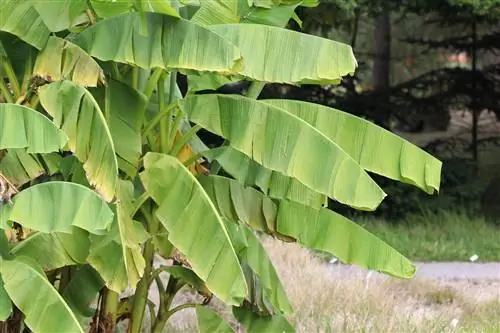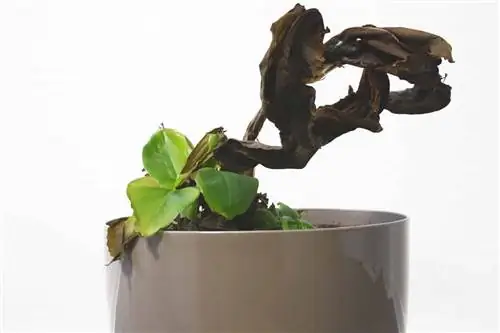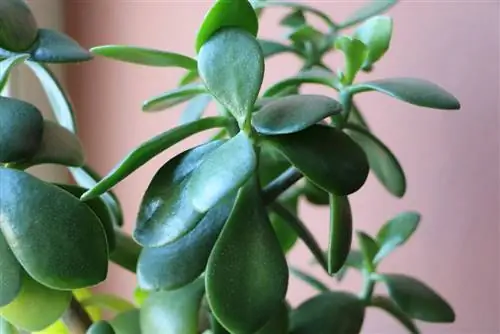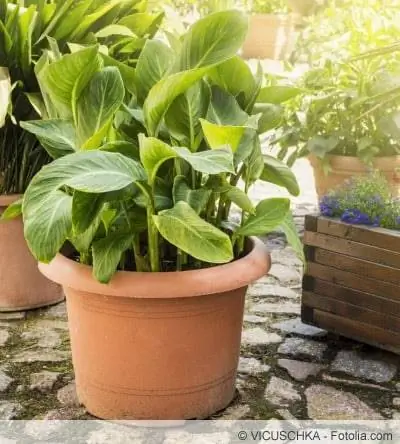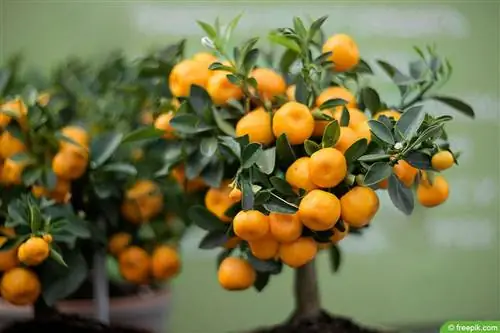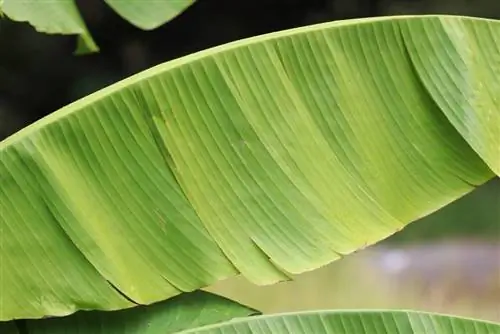- Author admin [email protected].
- Public 2023-12-17 03:39.
- Last modified 2025-06-01 06:48.
Actually quite undemanding in terms of care, banana plants do pose one or two challenges to their owners. The dwarf banana - for indoor cultivation - also easily reaches the 2 meter mark and this is the first big problem for its owners. Because the banana plant cannot be cut back like other plants that are a little too large. Winter brings with it another problem. The banana tree loves light and needs enough light to thrive. So in winter this could be a problem. But here you can provide additional light with plant lights. Easy to care for, but not undemanding would be the right names if you want to describe the banana plant in just a few words. So below are some important information and care tips on how you can take care of your banana plant without wrecking it.
Banana Plant Location
All banana species love and need sun. That's why you should place the indoor banana as close to the window as possible, but in midsummer you should definitely protect it from direct sunlight - the power of the sun increases through the window. Make sure you have fresh air, especially in summer. A tilted window near the location is good for the banana plant. Not only a lot of light, but also a lot of warmth is expected. It should never be colder than 15 degrees Celsius in the room where the plant is located. Temperatures around 20 degrees Celsius are better. Since bananas are native to tropical Southeast Asia, high humidity is also a must. Especially in winter, due to the dry heating air, the banana plants suffer from the dry air. Therefore spray extensively several times a day. The ideal humidity is around 50%. In summer, ornamental bananas can also be placed outdoors in a sunny spot. However, you should note that the thin leaves can tear in the wind.
Water and nutrient requirements
Large leaves create a large evaporation surface. For this reason, the banana plant needs a lot of water, especially in summer. A generous drainage layer in the pot ensures that water is drained away from the roots. The plant tolerates waterlogging and wet feet just as little as it tolerates persistent dryness. Even if the plant is on a saucer or in a planter, you should never water it from below. Always from above. Nutrient requirements are moderate. The banana is one of the few plants that requires fertilization in winter, even if only sparingly. To achieve optimal growth and good he alth, the banana plant should receive a commercial liquid fertilizer once a week in spring and summer according to the manufacturer's instructions. Once a month in autumn and winter. Due to the rapid growth, the banana has to be repotted again and again. Clay pots and good drainage should be the basic idea.
Propagate
Ensete ventricosum is propagated through seeds and is absolutely unproblematic. To do this, it is best to soak the seeds overnight. The next day the seed can be planted in a sand-peat mixture. The pot should be covered with cling film to ensure taut air. The seed germinates best at a temperature of 25 degrees Celsius. The dwarf banana Musa acuminata is propagated using Kindel - cuttings. Over time, the plant repeatedly forms new plants on the trunk of the mother plant. If necessary, the Kindel can be easily removed - ideally when repotting - and planted in a new pot. It is best to take children that are about 1/3 the size of the mother plant. These now have roots that are strong enough to support the plant.
Other information
Although the banana plant is quite easy to care for, mistakes in care can occur, but these are usually noticed relatively quickly. If you water too little or the humidity is persistently too low, the plants will develop brown, dry leaf edges. The only thing that can help here is to water more and spray the plant more often. If the banana loses its leaves, this is a clear sign that it is too cold or too dark (or both). However, such plants should by no means be thrown away. Simply make it brighter and warmer and they will sprout again in spring at the latest - assuming there are no other care errors. Air that is too dry attracts the red spider. This needs to be collected and increased humidity must be ensured in the future.

